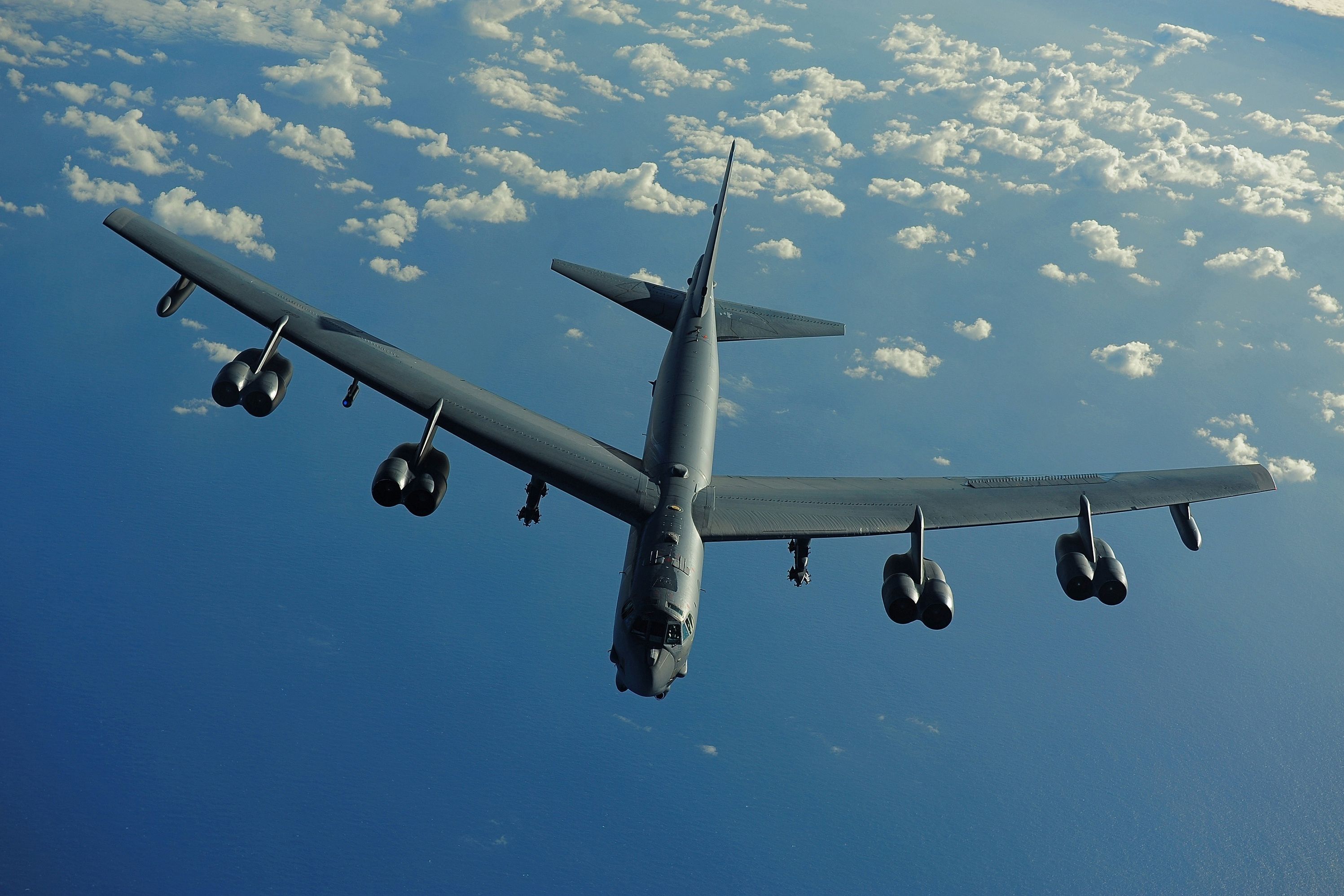Summary The B-52's eight engines are a legacy of old, underpowered designs from the 1950s. The eight-engine design is being maintained due to cost-saving and ease of maintaining existing structure. Rolls-Royce F130 engines replacing the TR-33, maintaining eight engines, will extend B-52 service life.
Today, all commercial passenger airliners have only two engines (the B-747 and Airbus A380 are out of production), so why does the B-52 Stratofortress not have four, not six, but eight engines? While there are many examples of six-engine aircraft (including those from WW2 times) , there are few examples of military aircraft with eight jet engines. With the B-52Hs about to be upgraded to the B-52J, the B-52 will continue to be the backbone of the US strategic bomber fleet and will continue to be the only example of a US Air Force eight-engined jet aircraft for many years to come. Why the B-52 has eight engines Part of the reason the B-52 has so many engines is that it is a very old design.

The B-52 was designed in the late 1940s and first flown in 1952. Back then, jet engines were still in a comparatively early stage of development and were underpowered and unreliable. Eight jet engines were needed to enable the aircraft to be the intercontinental high-altitude strategic bomber the Air Force required.
Original Pratt & Whitney J57 engine Max thrust: 8,700 lbf (original status thrust) Number built: over 21,000 First run: 1950 First flown: 1953 Notable applications: Boeing 707, B-52 Stratofortress, KC-135 Stratotanker, Douglas F4D, Skyray Douglas DC-8, McDonnell F-101, F-100 Super Sabre, Vought F-8 Crusader In other words, if a B-52-like bomber was to be built from scratch today, it would likely be designed with only four engines - just like most other large military aircraft (like the C-17 Globemaster, the B-1 Lancer, and the C-5 Galaxy). It is ironic just how old the B-52 is, and yet it is this aircraft that the Air Force wants to keep in service until the 2050s or even beyond. Very few eight-engined jet aircraft were designed - let alone built.
A few eight-jet engine designs were suggested but never built or passed the prototype stage. These include the Antonov An-325 (a proposed evolution of the An-225 Mriya), the Avro 730 (a 1950s proposed US reconnaissance aircraft and strategic bomber), the Northrop YB-49 (a 1940s US heavy bomber only built as a prototype, and the Convair YB-60 (a 1950s strategic bomber only built as a prototype). Notably, the 1950s-designed but canceled North American XB-70 Valkyrie strategic bomber, capable of flying at speeds of Mach 3+, was built with six engines.
The B-52 bombers are expected to fly well into the 2050s. Why B-52 will keep its eight engines Over the years, there have been proposals to re-engine the Stratofortress and reduce it to just four engines. But this has never happened, partly because it would cause problems as the G and H model's shorter tail fins and smaller rudder might not have copped with the asymmetric thrust had an engine flamed out.
Pratt & Whitney JT3D/TF33 Max thrust: 17,000 lbf Number built: 8,600 (approx) First run: 1958 First flown: 1959 Notable applications: Boeing 707, Boeing B-52H Stratofortress, Boeing KC-135E Stratotanker, Douglas DC-8, Lockheed C-141 Starlifter The Air and Space Forces Magazine states, " As is true today, the eight engines will fit in four nacelles. While USAF once considered four large-fan commercial engines instead, it stuck with eight to avoid substantial redesign of the wing, cockpit, and other components, and to minimize risk and delay. " So, the B-52 will keep its eight-engine design for the rest of its service life (as it is easier to stick with its existing design).
Reducing the engine count to four is just too much work and effort to be worthwhile. The US Air Force has been instructed to address the issues with the infamously bad work environment onboard the B-52. New Rolls-Royce F130 engines The B-52's engines have been upgraded over the years.
The current B-52H model has much more powerful and fuel-economical TR-33 turbofan engines than the original ones the aircraft flew with. But this is not the end. The B-52Hs are being upgraded to the B-52J (expected to come into service in 2033) as part of the B-52 Commercial Engine Replacement Program (CERP).
The program will also extend the B-52s service life into the 2050s. Upcoming Rolls-Royce F130 engines Max thrust: 17,000 lbf (F130) Number built: 3,600+ (civilian BR700 version); 650 (F130 planned) First run: 1995 (civilian BR700 version) (F130 being tested) Notable applications: Bombardier Global Express, Boeing 717, Gulfstream V (civilian BR700 version) The eight old TR-33 engines will be replaced with eight Rolls-Royce F130 engines (the militarized version of Rolls-Royce's commercial BR-725). Rolls-Royce edged out competitors GE Aviation and Pratt & Whitney to re-engine the mighty strategic bombers in 2021.
Rolls-Royce is expected to provide some 650 F130s to equip some 76 B-52 bombers, replacing the Pratt & Whitney TR33 engines on a one-for-one basis (eight per aircraft). While these new engines are a generational leap from the older ones, they do not provide more thrust. Increasing the thrust would also require rebuilding the airframe to handle the greater strain.
By maintaining the same number of engines and the same pylons with the same thrust, the Air Force can reduce the need to overhaul the aircraft while still upgrading the engines..



















